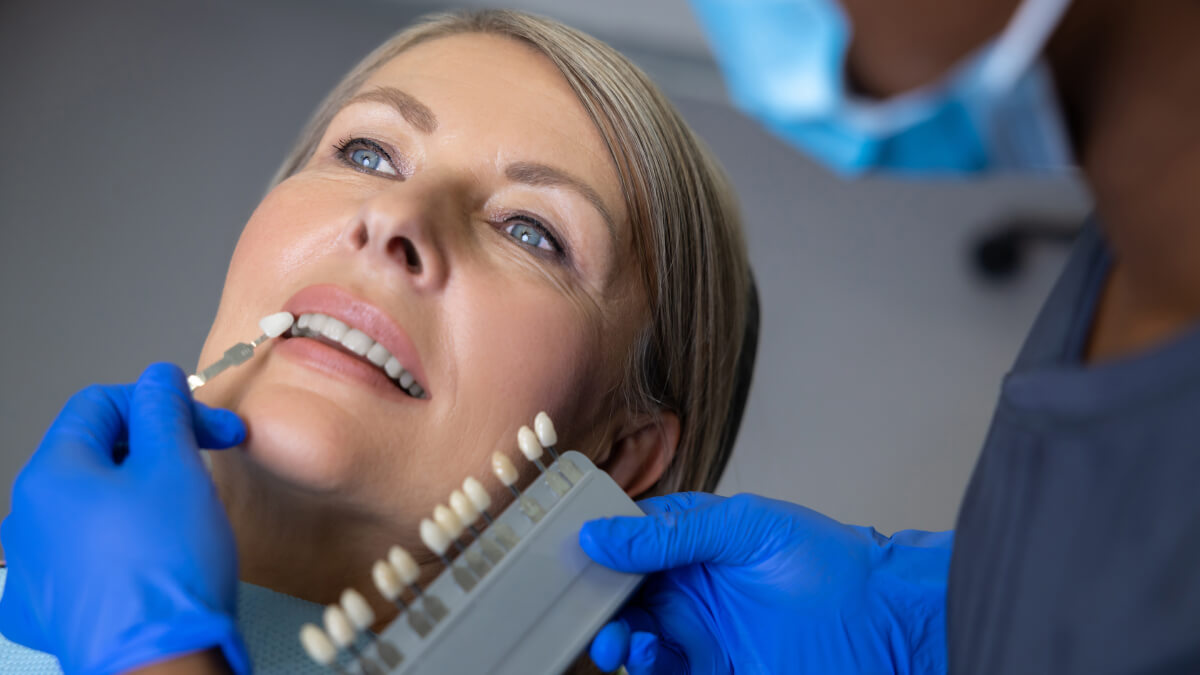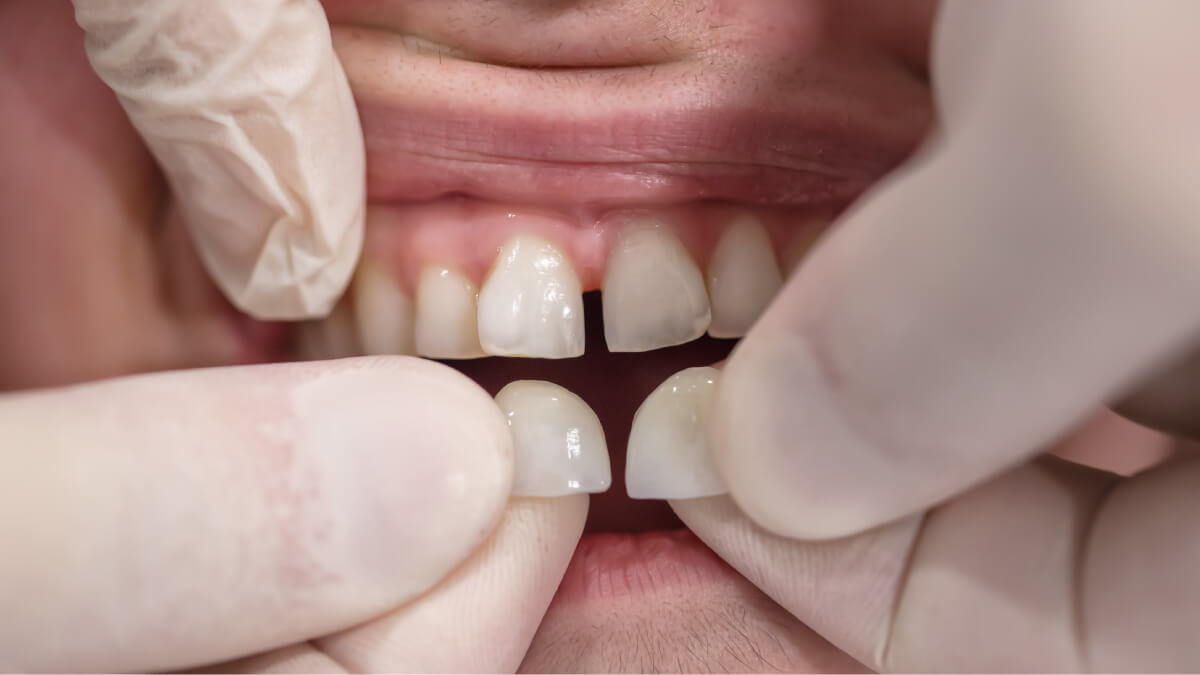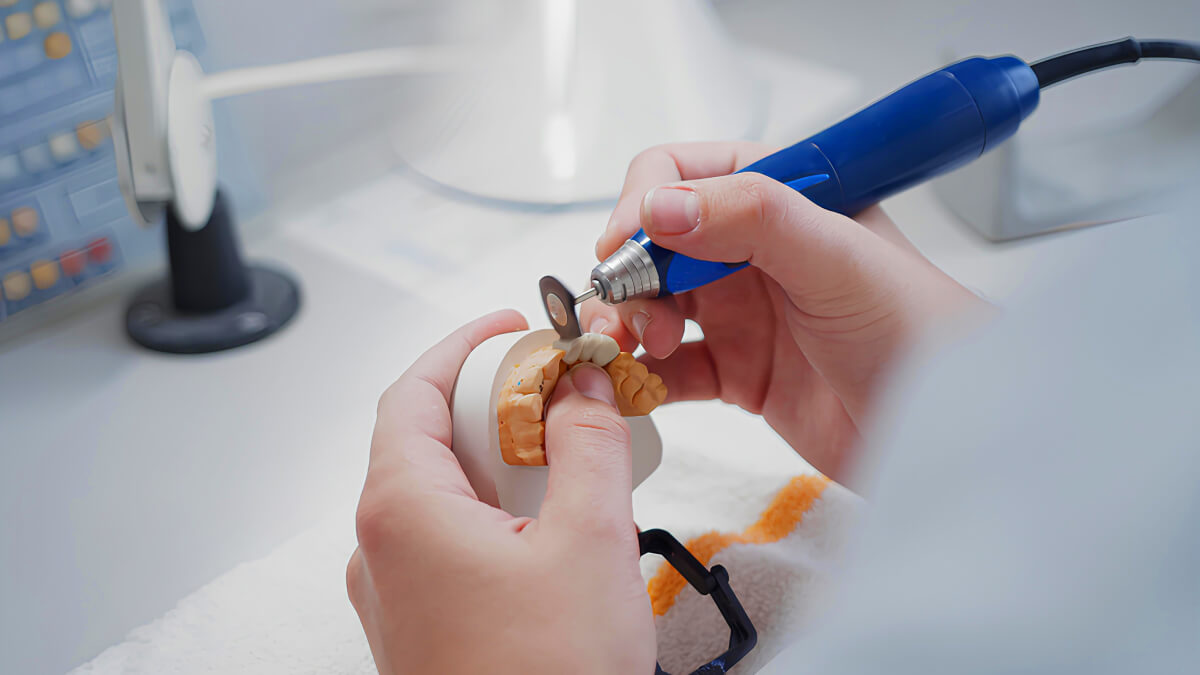What Are Veneers?
- Author: Diamond Dental
- Date: July 31, 20242024-07-31T13:43:192024-07-31T13:43:18



Veneers have rapidly become one of the most common cosmetic dentistry treatments, having skyrocketed in popularity over the last few years. Thousands of people in the UK have turned to the procedure to straighten their teeth and restore confidence in their smile. However, having only come into the spotlight in recent years, there’s a lot of confusion and misinformation surrounding veneers. So, in this article, we’ll be using our experience as a leading dentist in Milton Keynes to answer all of your questions, from ‘What are veneers?’ to ‘How much do they cost?’. Keep reading to better understand whether the procedure is right for you.
It’s a common misconception that veneers are a new invention. In fact, they’ve been around for nearly 100 years. Designed in 1928 by Californian dentist Charles Pincus, the first ever veneers were applied to an actor using temporary adhesive to improve his smile before shooting a film. While they did achieve the desired effect, early veneers would fall off after a couple of hours. Over the next few decades, major advancements were made to create the methods we use today. Keep reading to learn how modern-day veneers transform your smile.

Veneers are thin, custom-made shells designed to improve the appearance of teeth by covering their front surface. They are bonded to teeth to change their colour, shape, size, or length and help to address a number of dental issues. This includes:
The preparation process is as follows:
There are currently four different veneer materials available, each with different benefits.
One of the most popular veneer materials, porcelain, is long-lasting, stain-resistant, naturally tooth-coloured and can help improve gum tissue. It’s a popular alternative to dental crowns and usually lasts between 10 and 15 years before needing maintenance or replacement. It’s one of the most durable veneer materials, so the chances of damage are very low. Additionally, dental professionals are given the choice of over 15 colours to find a material that accurately matches your teeth.
All of these advantages do come at a cost, as porcelain veneers are among the most expensive materials. Also, any enamel must be removed before they can be applied. Despite these drawbacks, thousands of individuals have already decided porcelain veneers are right for them.
Composite veneers are similar to porcelain but are made from different materials to provide faster installation at a lower price. The material is the same as that used in tooth-coloured cavity fillings, meaning it is easy to repair chips in the veneer.
The main drawback of composite veneers is their durability when compared to porcelain. Their lifespan is shorter, and they are more prone to discolouration, requiring more frequent maintenance.

Lumineers were developed as an alternative to porcelain veneers and help reshape an individual’s teeth. They’re extremely thin and can last over 20 years. Often, a key motivator behind opting for lumineers is the fact that they are reversible, allowing for greater flexibility.
Lumineers are more easily chipped than other materials, and their lifespan can become much shorter once damaged. There’s also a greater chance of detachment with lumineers, meaning further dental work and investment are needed.
As the name suggests, temporary veneers are removable and act as a snap-on solution to improving an individual’s smile. They’re less invasive and more cost-effective than other options. Often, they are used as a temporary solution while waiting for the permanent veneer procedure.
While they offer greater flexibility, temporary veneers are more fragile than other types and easily stain. Therefore, frequent maintenance may be required.

Composite bonding and veneers are both effective dental procedures in improving the appearance and functionality of an individual’s mouth. As a leading private dentist in Milton Keynes, we offer both of these treatments at our clinic, and each benefits our clients in different ways. Unlike veneers, composite bonding involves applying a resin to the tooth and sculpting it into shape. We’ve broken the differences between the differences into six categories.
View this post on Instagram
Veneers involve more preparation than composite bonding, as the dentist will need to remove a thin layer of enamel to fit the veneers over the top. For composite bonding, the dentist only needs to roughen the tooth surface so the resin can bond properly. That means bonding is minimally invasive, while veneers are usually irreversible.
Composite bonding is typically less expensive than veneers, but the cost of each treatment is based on your specific requirements. You will need to schedule a consultation with a dentist to determine the exact cost, as they will evaluate your smile.
Veneers typically have greater longevity than composite bonds, but both can endure for numerous years with appropriate maintenance. Bonds can be easily mended if any damage occurs, whereas cracked veneers need replacing.
Both procedures offer natural-looking results because the dentist will match the colour to the existing teeth. However, unlike composite bonds, veneers have light-reflecting properties, mirroring that of a patient’s natural enamel.
Both veneers and composite bonds require similar care to help them last as long as possible. This includes:
Composite bonding is a fast solution and can usually be completed in one appointment. Veneers are custom-made to fit your mouth, requiring at least two visits to fit.

On average, veneers are expected to last around ten years if they are well cared for. However, this may be slightly more or less, depending on the type of material they are made from. Just like natural teeth, veneers can become stained or chipped, so regular check-ups and routine maintenance are essential to keep them in optimal condition.
Once veneers have become damaged or detached, they will need replacing because the teeth below have been compromised during the installation process. That said, veneers are less maintenance and last longer than less invasive alternatives like composite bonding.

The price of veneers depends on the material used and the number of teeth being covered. Temporary veneers are the cheapest option as they are often used as a stop-gap solution while permanent alternatives are being manufactured.
Composite veneers are a cost-effective, permanent option because the resin is less expensive than porcelain, and installation is faster. Often, they are in place within one visit to the dentist, saving further on labour costs. As mentioned previously, composite veneers are less durable and more prone to discolouration than porcelain veneers, so many deem the extra investment in porcelain worthwhile.
While porcelain veneers are usually the most expensive option, the aesthetic improvements are clear. They’re both longer-lasting and more stain-resistant than composite veneers while reflecting light in the same way natural enamel does.
At Diamond Dental MK, our prices for veneers in Milton Keynes start from just £695.
View this post on Instagram
Veneers are a big commitment, so it’s natural to be hesitant about proceeding with the procedure. While the costs and installation process may appear daunting, veneers have helped countless individuals reclaim their smiles and restore their oral health. If you’re considering veneers, set up a consultation at Diamond Dental MK. One of our expert dentists will walk you through the procedure and help you understand your options.
Submit your details below, and we’ll be in touch as soon as we can!

Achieving straight teeth is a common aspiration for patients from their early teenage years all the way up into adulthood, and thankfully, technological and material advancements have meant we now have a diverse range of options for patients seeking to enhance the alignment of their teeth. So, in this article, we’ll explain how to get […]

Despite affecting around eight in ten adults in the UK, tooth decay is often left untreated by those suffering from it. In fact, dental treatments across the board are on a steady decline as more and more people are neglecting their oral health. However, if left untreated, dental conditions like tooth decay can quickly lead […]